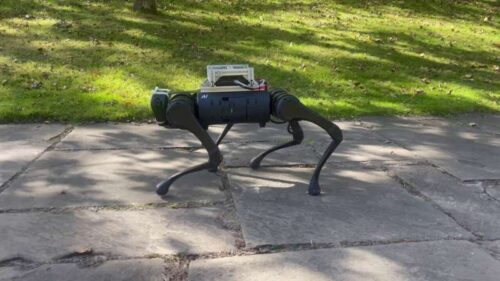The AI system teaches a robot to walk on ground by copying animal movements and using only its own sensors to adapt in time.

Researchers from the University of Leeds and University College London built an AI system that helps a four-legged robot change how it walks, depending on the surface. Trained in simulation, the robot learned to switch gaits like trotting or bounding on rough ground such as rocks and woodchips. The same software worked on a real robot too. Using deep reinforcement learning, the system copies how animals move—saving energy, keeping balance, and choosing the right gait. The robot learned this in just nine hours, much faster than animals usually take.
Unlike past systems that require detailed instructions or visual sensors, this robot makes decisions using only its body and internal sensors. It chooses how and when to change gait by drawing on three key animal-inspired strategies: switching gaits for different needs, remembering past movements, and adjusting on the go.
Traditional AI systems often struggle in unpredictable environments. This system was built specifically to overcome that limitation, giving the robot autonomy to handle unknown or dangerous areas—such as disaster zones, nuclear sites, or space missions—where sending humans would be risky.
The training process involved hundreds of virtual environments. Over time, the robot learned not just how to walk in different ways but also how to decide which style to use in each situation. It could even recover from sudden disruptions like being struck by an object, without relying on visual cues.
Beyond robotics, this research also offers new ways to study animal behavior. Using robots instead of live animals can provide insights into how creatures stay balanced or move on unstable surfaces—without needing to place sensors on real animals.
Though the system was tested on one dog-sized robot, the method can work with other four-legged robots that have a similar body design. Future plans include adding advanced skills such as jumping, climbing, or walking on steep slopes, making robots more capable of moving through extreme environments on their own.









